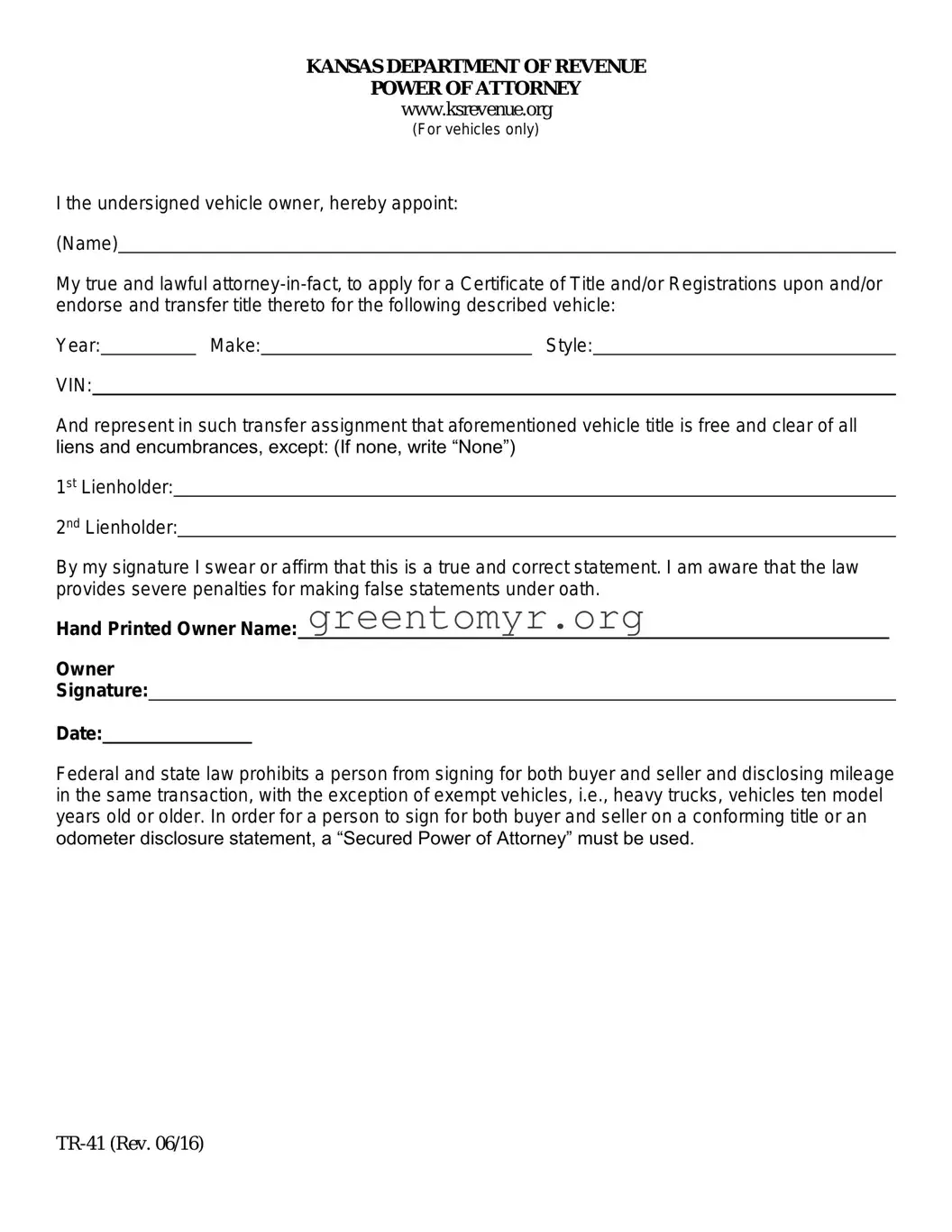KANSAS DEPARTMENT OF REVENUE
POWER OF ATTORNEY
www.ksrevenue.org
(For vehicles only)
I the undersigned vehicle owner, hereby appoint:
(Name)
My true and lawful attorney-in-fact, to apply for a Certificate of Title and/or Registrations upon and/or endorse and transfer title thereto for the following described vehicle:
VIN:
And represent in such transfer assignment that aforementioned vehicle title is free and clear of all liens and encumbrances, except: (If none, write “None”)
1st Lienholder:
2nd Lienholder:
By my signature I swear or affirm that this is a true and correct statement. I am aware that the law provides severe penalties for making false statements under oath.
Hand Printed Owner Name:
Owner
Signature:
Date:
Federal and state law prohibits a person from signing for both buyer and seller and disclosing mileage in the same transaction, with the exception of exempt vehicles, i.e., heavy trucks, vehicles ten model years old or older. In order for a person to sign for both buyer and seller on a conforming title or an odometer disclosure statement, a “Secured Power of Attorney” must be used.
TR-41 (Rev. 06/16)

